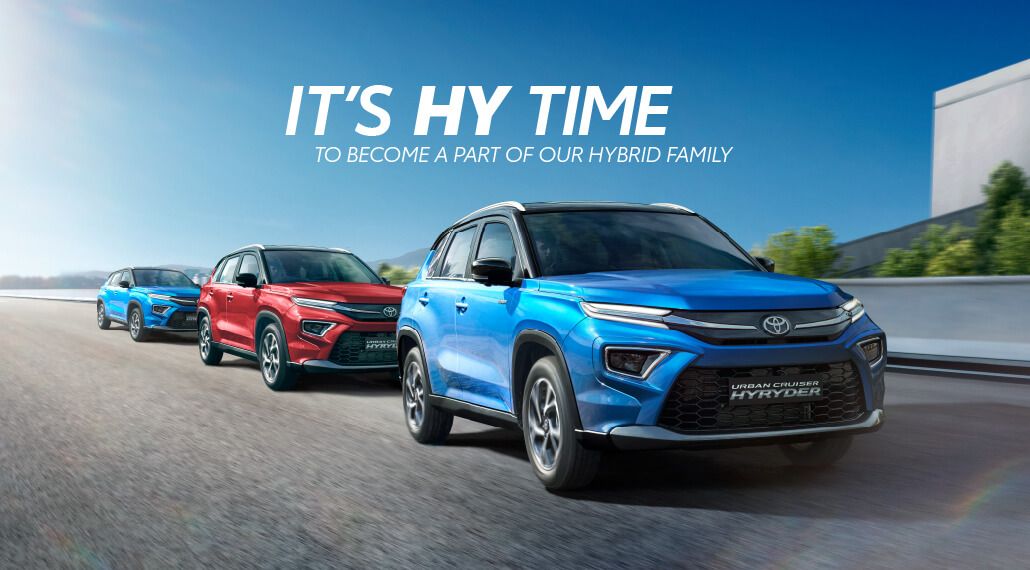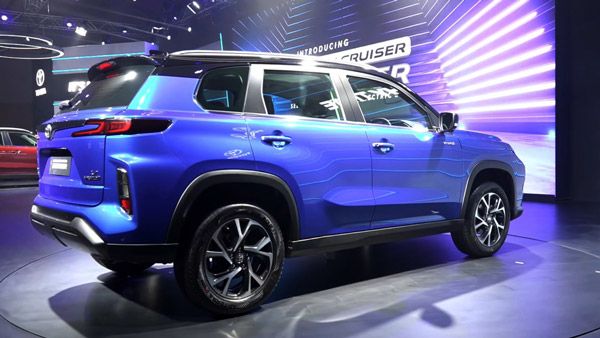Toyota Urban Cruiser Hyryder First Review: Detailed Review & Analysis
By Sachit Bhat
1983 Views
The Toyota Urban Cruiser Hyryder has been launched. Today we will review the car and check on whether the Urban Cruiser Hyryder is going to give tough competition to its rivals or not
The Toyota Urban Cruiser Hyryder has been launched. Today we will review the car and check on whether the Urban Cruiser Hyryder is going to give tough competition to its rivals or not.
The Hyundai Creta has dominated the B-segment SUV segment for many years. Challengers have either faded into obscurity or mirrored its presence with a more premium highlights package. To date, however, none have succeeded in dethroning the Creta.
So what happens when the carmaker best known for producing the Indian political class' favorite SUV, the Toyota Fortuner, decides to go all-in on the Creta in the first round?
The Toyota Urban Cruiser Hyryder is a rather handsome beast with an overly long name. Sorry, but I had to say it. However, the name Hyryder should give you a hint as to Toyota's secret KO punch. So, does the Toyota Urban Cruiser Hyryder have what it takes to KO the Creta, or is it just too much hot air for the moment? To find out, we drove the Toyota Urban Cruiser Hyryder in Bangalore.
Exterior Design
Toyota spared no expense in designing the new Urban Cruiser Hyryder. (Wow, that was a mouthful.) While its sharp lines give it a very stylish appearance, there are far too many details to focus on, which can leave your head a little fuzzy.
As an example, consider the front end. The Hyryder has adopted the split headlamp design that has become popular among today's SUVs. At the top, there are twin LED daytime running lights that are linked to the Toyota badge in the center by chrome strips that also run through a crystal acrylic upper grille element. The LED projector headlamps that surround the gaping trapezoidal lower grille are housed in chrome-encased enclosures beneath the sculpted front bumper. What appears to be a splitter element sits beneath this grille, though it appears to be more of a styling element than an actual aerodynamic element.
All of the bulges and creases on the Hyryder take center stage on the sides. The bonnet creases and domes appear more prominent when viewed from the side. The wheel arches on the Hyryder are quite large, with plastic surrounds. These wheel arches house the rather nice-looking 17-inch alloy wheels, which appear to be a size too small. Other side design elements include black ORVMs, a bit of chrome on the windows, and a floating roof design that gives the D-pillar a dual-tone appearance.
The rear of the Hyryder is busy as usual, with sleek LED brake lights connected by a chrome bar housing the Toyota badge. Turn signals and reversing lights are housed in vertically stacked units on either side of the SUV's sculpted tail section. The rear also has an integrated roof spoiler that houses the third brake light and a faux skid plate.
Interior & Features
The interior of the Toyota Hyryder begins to appreciate Toyota's decision to cram as much as possible into its Creta-rivaling SUV, with a dual-tone black and brown theme that looks very tastefully done and gives the SUV a very premium feel. Soft-touch materials are used throughout, and the large panoramic sunroof makes the cabin feel very spacious and airy. The hard plastic sections, on the other hand, are not difficult to find and are a major disappointment.
The multi-layered dashboard houses a digital driver's display on the right and a 9-inch touchscreen unit in the center, which dominates the SUV's center section. The Toyota Hyryder supports Android Auto and Apple CarPlay, as well as voice commands from both Android and iOS voice assistants. The display also serves as the 360-degree camera's output screen.
The Toyota Hyryder comes standard with a number of connected cars features such as remote ignition on/off, remote AC control, door lock/unlock, stolen vehicle tracker, and immobilizer, all of which can be accessed via Toyota's app and triggered via a connected smartwatch.
Other highlights of the feature-packed Hyryder include ventilated front seats, a sliding front armrest, and reclining rear seats with a 60:40 split for more storage if needed (which you will, given the 255-liter boot). A heads-up display, paddle shifters, a wireless charging pad, rear a/c vents and USB ports, ambient lighting, and a trunk light are among the other features.
Six airbags, ABS with EBD, vehicle stability control, hill hold control, hill descent control, all-wheel disc brakes, 3-point seat belts for rear passengers, and a TPMS system are standard on the Toyota Urban Cruiser Hyryder.
Specs & Dimensions
The Toyota Urban Cruiser Hyryder comes with two powertrain options: a 1.5-liter mild hybrid system from Maruti Suzuki and its own 1.5-liter Atkinson cycle engine with a proper self-charging hybrid system similar to the Camry. Fans of Maruti and owners of the smaller Urban Cruiser are familiar with the mild-hybrid setup.
The N.A. 1.5-litre The petrol engine produces 101.65bhp and 136.8Nm of peak torque when combined with an integrated starter generator. This mild hybrid setup is available with either a 5-speed manual or a 6-speed automatic transmission that sends power to the front wheels or all four depending on the configuration.
The self-charging strong hybrid setup (which we drove, more on that later) with a 1.5-liter Atkinson cycle engine and a single electric motor is the second powertrain option. The engine has a peak torque of 91.1bhp and 122Nm, while the motor has a peak torque of 79.1bhp and 141Nm.
However, the peak system output is limited to 114bhp in order to achieve the astounding claimed mileage figure of 27.97km/l. This powerful hybrid setup is only available with an e-CVT transmission that sends power to the front wheels.
The Toyota Urban Cruiser Hyryder measures 4,365mm in length, 1,795mm in width, and 1,645mm in height. The Hyryder has a 2,600mm wheelbase and weighs 1,755 kilograms in its strongest hybrid configuration.
Driving performance
The response when you mash down the accelerator is quite lethargic in both Eco and Normal modes, but it ramps up to acceptable levels in Power mode, while EV mode is as silent as the grave.
The battery regen mode allows one-pedal driving in the Hyryder, which appears to be witchcraft at times. Thankfully, all of the churning and toiling under the hood is barely discernible, and most of the time you feel like you're driving a regular petrol car designed for Indian conditions. The CVT gearbox appears to be quite laid back, and those looking for some fun will despise its take-a-chill pill nature.
The Hyryder has a rather stiff suspension setup to compensate for the weight of the hybrid system's batteries, which are housed in the boot. This is noticeable, especially in the rear, when the SUV travels over rough terrain at high speeds (not nice). The Hyryder has some body roll, but not enough to make you feel like you're hanging on for dear life when falling off a merry-go-round.
The steering wheel is a Maruti Suzuki parts bin special, and it has a Maruti Suzuki feel to it. The steering feels light at low speeds, which should help in city conditions. However, at higher speeds, we wish the steering wheel felt more substantial in our hands.
The new Hyryder's brakes are discs all around, and they provide plenty of bite and progression. The pedal itself does not have much travel and is quite simple to use. The Hyryder's cabin NVH levels are among the best in the industry. We couldn't hear anything outside, especially in EV mode, which was a little disconcerting.
Verdict
The Toyota Urban Cruiser Hyryder is a brilliant SUV that combines sharp looks, a slew of technology, and witchcraft levels of hybrid goodness. While Toyota appears to have a brilliant package in the Hyryder, we won't know if it can beat the Creta until Toyota reveals the price and allows us to properly compare these two cars and the others available in this segment.